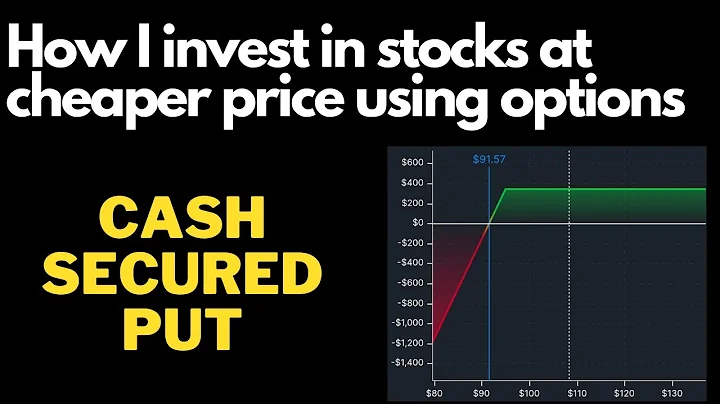Create Native Bundle Applications in Shopify
Table of Contents
- Introduction
- Why Create a Native Bundle Application in Shopify?
- Benefits of Building a Bundle Application
- Considerations for Enterprise Builds
- Overview of the Process
- Step 1: Building the Product Description Page
- Step 2: Designing the Cart
- Step 3: Conveying the Bundle in the Shopify Checkout
- Limitations for Small to Medium Size Businesses
- Leveraging Shopify Scripts for Cost Reduction
- Conclusion
Building a Native Bundle Application in Shopify
Shopify is a popular e-commerce platform that offers a wide range of applications for various functionalities. However, there may be instances where building a native bundle application within Shopify becomes necessary. This article explores the process of creating a bundle application natively within Shopify, focusing on the product description page, cart design, and integration into the checkout process.
Introduction
In this article, we will delve into the concept of building a native bundle application within Shopify. While there are several existing bundle applications available, this approach is particularly useful in enterprise-level builds where inventory management and automation are crucial.
Why Create a Native Bundle Application in Shopify?
Building a bundle application within Shopify offers several advantages. Firstly, it allows for seamless integration within the existing theme, providing a cohesive user experience. Moreover, it enables accurate inventory monitoring when bundles include SKUs that are also sold separately. By managing inventory between bundle items and individual SKUs, you can ensure that adding or removing items from a bundle reflects the available stock accurately.
Benefits of Building a Bundle Application
There are numerous benefits to building a bundle application natively within Shopify. Some of these advantages include:
-
Seamless integration within the existing theme: By building the bundle application natively within Shopify, you can ensure a consistent and seamless user experience throughout the website.
-
Accurate inventory management: The bundle application allows for precise inventory monitoring, ensuring that adding or removing items from a bundle accurately reflects the available stock.
-
Improved automation: Automating the bundle creation process saves time and effort, particularly in enterprise-level builds with a vast number of SKUs.
-
Customizability: By developing a native bundle application, you have the flexibility to tailor the user interface and functionality to meet your specific business needs.
Considerations for Enterprise Builds
Native bundle applications are especially prevalent in enterprise builds with a large product catalog and a need for automated inventory management. These builds often involve numerous SKUs and require a way to automate the addition or removal of items when a bundle is created or modified. By creating custom bundle functionality within the Shopify theme, businesses can efficiently manage their vast product offerings.
However, it is essential to recognize that building a native bundle application requires advanced programming expertise and may not be suitable for small to medium-sized businesses that do not require extensive inventory automation. Additionally, businesses using Shopify Scripts to reduce costs based on cart contents may face limitations when integrating native bundle applications.
Overview of the Process
Building a native bundle application within Shopify involves several steps. In this article, we will break down the process into three videos, starting with the product description page (PDP), followed by the cart design, and finally, the integration into the Shopify checkout.
Each video will provide a comprehensive walkthrough, showcasing practical techniques and best practices to ensure a successful native bundle application implementation.
Step 1: Building the Product Description Page
The first step in building a native bundle application is designing the product description page (PDP). This involves creating a visually appealing interface using CSS Grid to arrange different elements. The HTML and Liquid code will then be used to pull relevant product data, such as the handle and variant IDs, using the Shopify Ajax API. By leveraging the Ajax API, you can dynamically retrieve and manipulate data to create and update the bundle.
Step 2: Designing the Cart
The second step focuses on designing the cart to accommodate the bundle functionality. This includes incorporating user logic for adding or subtracting items, displaying item properties, and handling dynamic updates when a bundle is modified. By leveraging line item properties, you can facilitate the removal or addition of individual items within a bundle without affecting the entire bundle.
Step 3: Conveying the Bundle in the Shopify Checkout
The final step involves testing and ensuring that the bundle accurately conveys into the standard Shopify checkout process. This step is crucial to maintain consistency and avoid any discrepancies between the bundle and individual items during the purchase process. By thoroughly testing the checkout process, you can identify and address any potential issues or inconsistencies.
Limitations for Small to Medium Size Businesses
While native bundle applications offer several benefits, small to medium-sized businesses may face limitations when implementing them. One limitation arises from the use of Shopify Scripts to reduce costs based on cart contents. Native bundles may not integrate seamlessly with these cost reduction scripts and may require alternative approaches for achieving cost optimization.
Leveraging Shopify Scripts for Cost Reduction
Shopify Scripts provides a powerful tool for businesses to reduce costs based on various parameters, such as cart contents. By incorporating bundle functionality into the scripts, businesses can optimize costs by offering specific discounts or promotions for bundle purchases. This integration can further enhance the value proposition of the native bundle application and drive customer conversions.
Conclusion
In conclusion, building a native bundle application within Shopify offers several advantages, particularly in enterprise-level builds. By following the step-by-step process outlined in this article, businesses can create a cohesive bundle experience for their customers, automate inventory management, and achieve cost optimization. However, it is essential to consider the specific business requirements and limitations before embarking on a native bundle application implementation.
Highlights
- Building a native bundle application within Shopify allows for seamless integration and inventory management.
- Native bundles are particularly useful in enterprise builds with a vast number of SKUs and automation requirements.
- Designing the product description page, cart, and checkout integration are essential steps in creating a native bundle application.
- Small to medium-sized businesses may face limitations due to Shopify Scripts and alternative cost optimization approaches may be required.
- Leveraging Shopify Scripts can enhance cost optimization and drive customer conversions within a native bundle application.






















